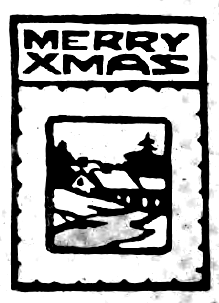Due to the fortuitous circumstances of rearranging the PHW library for the 2015 Holiday House Tour, PHW will be digitizing some of our research materials that are full of good information but have received little attention from researchers. To start the series, we will begin with perhaps the most common question we receive – how to research an old house.
Many frequent research topics and resources are linked at PHW’s page Research Your Property. The starting point of any effective, in-depth history is finding the chain of title, or the history of the property’s owners. It is assumed you have some familiarity with researching deeds in the following collected tips.
From John G. Lewis:
First check:
1. What I Know About Winchester by William Greenway Russell for any names he may have and those of adjacent property owners.
2. Map of Winchester showing the in-lots by number, as these were often used in the deeds.
3. Sanborn Insurance Maps
4. The Story of 100 Old Homes in Winchester, Virginia by Garland Quarles for his deed references.
5. The 1976 survey files held by PHW, as some contain deed research. (If you complete deed research on a property, PHW will gladly add a copy of your findings to our files.)
City Clerks Office, which holds the deeds, deed indexes, wills-chancery cases, and land books. Look for copies of auction advertisements or listing of improvements. Note that if a woman inherits a property it will be in her father’s will and not in the deed indexes. If you hit a dead end like this, check adjacent lots for owners of the lot you are working on, prior to where you are, and check will indexes for that name to see if the lot was left to a daughter or widow who has since remarried, etc.
As some deeds are in both the City and County Clerks Offices, in your notes use WDB (Winchester Deed Book) WWB (Winchester Will Book) or FCDB and FCWB for the County.
Be sure of the location and adjacent owners, and make notes of these, as some people owned numerous properties in different locations and left some to sons of the same name!
When you get to original owners, circa late 1700s or early 1800s, and after checking construction materials of the original and/or and changes of additions and what if any outbuildings there are, check the Mutual Assurance Policies in the Handley Archives in the names of the early owners. Most of these show a location and the width/depth of the structure, number of stories, and kind of building material, like the Sanborn Insurance maps.
Sometimes you have to play the long shots of a possibility based on your information at hand; these often pay off, and sometimes not.
Street directories, found in the Stewart Bell Jr. Archives at Handley Library, are the quickest way to find and track resident names if you have a street address. Note that street numbers and names have changed over the years, and you should verify the names uncovered through the directories through other resources. Learn more about the resources and tips for researching old houses at the Handley Library website.
Via the National Trust for Historic Preservation, remember to check census record, probate records, marriage records, court records, building permits, and minutes of public bodies like the city council. Consult obituary records for previous owners, articles on natural disasters or arson, and articles on development of subdivisions. If you are lucky, you may find original architectural plans, but those are seldom available. Don’t forget to check the local archives for family records like diaries, letters, account books, and scrapbooks. Corroborate any oral traditions you can collect with other research materials to verify stories. If you can, you may use dendrochronology and nail chronology in dating the building.
From Margaret T. Peters, a former research historian from the Division of Historic Landmarks (now Virginia Department of Historic Resources) come the additional tips:
Check Swem’s Index for a comprehensive index to several publications concerning Virginia history and genealogy. Check patents under a family name in Cavaliers and Pioneers. Check the index to the Virginia Gazette edited by Lester Cappon and Stella Duff for advertisements and public notices of auctions, runaway slaves, and ship sailing dates from 1735-1780. This is most useful for the Tidewater region. Check church parish record for births, deaths, and marriages. The Official Military Atlas of the Civil War can be useful if there was Civil War activity near your property. This book is a reprint of the 1891 report Atlas to Accompany the Official Records of the Union and Confederate Armies.
All of these tips are just starting points and suggestions – not all sources are relevant or applicable to all properties and families. Researching your house is like a jigsaw puzzle with the pieces hidden in a scavenger hunt with few clues to their locations. You may not find all the pieces of the puzzle that you would hope to find, regardless of how long and diligently you research. All the individual pieces, however, will add up over time to form a more complete picture of the house and its occupants.


